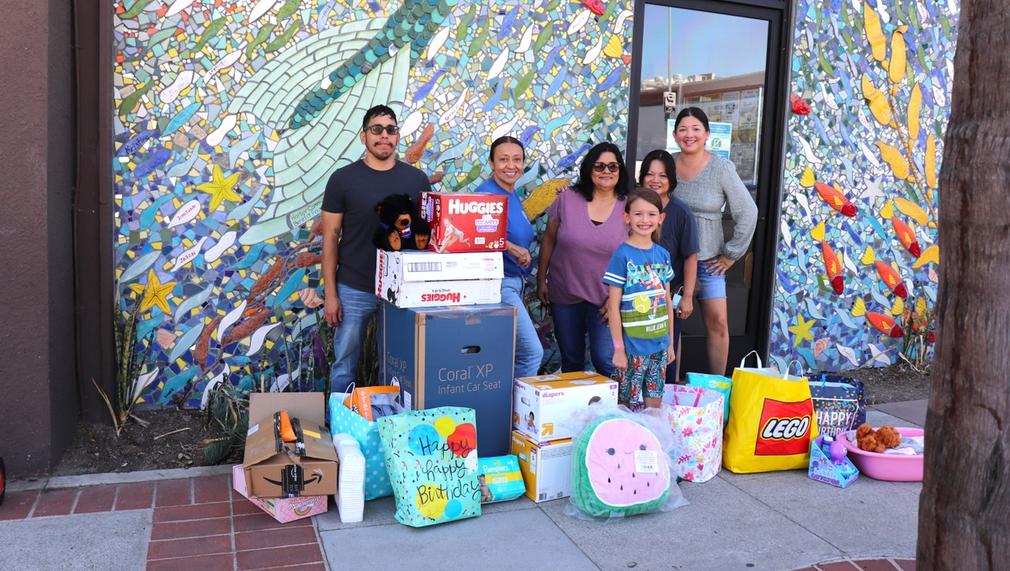Comprehensive Housing Advocacy for Survivors
In Los Angeles County, survivors of domestic violence (DV) make up 39% of the county’s homeless population (LAHSA Point-In-Time 2022) while many continue to struggle with the difficult decision between continued abuse or homelessness due to the inaccessible rental market. Rainbow Services’ combination of trauma-informed shelter and housing advocacy supports the many needs survivors and their children face when fleeing abuse so they may establish immediate safety and a path towards emotional and economic independence.

What is the primary issue area that your application will impact?
Affordable housing and homelessness
In what stage of innovation is this project, program, or initiative?
Expand existing project, program, or initiative (expanding and continuing ongoing, successful work)
What is your understanding of the issue that you are seeking to address?
Domestic violence (DV) affects one in four women and one and seven men. This public health issue is prevalent across all socioeconomic levels and its insidious nature makes it difficult to identify and address. Low-income survivors in Los Angeles County further struggle to overcome the combined challenges of generational violence and poverty, while the heavily impacted DV service system remains strained due to a lack of funding. Though more than a third of the county’s homeless population reports a history of DV (Los Angeles Homeless Services Authority), only $8 million of the county’s $975 million American Rescue Act spending plan for housing and homelessness was allocated to survivor-specific services. As we urge policymakers to recognize the intersection between DV and homelessness, it is part of our organizational mandate to provide survivors with comprehensive, low-barrier services so they may establish and sustain independent lives free from abuse.
Describe the project, program, or initiative this grant will support to address the issue.
Rather than offering standalone services, Rainbow provides a combination of shelter, support, and financial assistance that meets the many, unique needs DV survivors and their children face when fleeing abuse. This holistic, survivor-centered approach is based on the Domestic Violence Housing First (DVHF) model that has proven to improve the rate of success for DV survivors seeking to establish and maintain stable housing and independence, minimizing their chance of returning to their abuser or falling back into homelessness. Survivors will have a safe, confidential stay in our emergency shelter while they address their safety needs, gain a better understanding of the dynamics of intimate partner abuse, and identify housing options in proximity to schools, public transportation, and other amenities. Childcare and youth enrichment activities are also available to support parents while they attend services. Those who require an extended stay will be supported in applying for transitional housing. Once a survivor is ready to live on their own, our housing advocates will support their housing search and offer flexible funding for expenses such as deposits, rent, medical bills, and car repairs so the survivor can maintain their employment and housing. Well-established in the community, survivors can access our services directly or by referral from local law enforcement, first responders, hospitals, and fellow service providers.
Describe how Los Angeles County will be different if your work is successful.
Rainbow’s work provides direct relief to the homelessness crisis in Los Angeles County. We were among the first agencies in California to implement the DV Housing First (DVHF) model, which helps survivors find stable housing as quickly as possible through financial assistance, survivor-driven advocacy, and community engagement. In 2017, an evaluation of the DVHF model found that 58% of survivors who received DVHF services were able to maintain permanent housing long term, thereby preventing homelessness. Survivors also expressed increased feelings of pride after learning skills that helped them maintain housing. There is a high demand for DVHF services in our community. Further investment into this program will increase our capacity to support survivors at risk of homelessness and can lead to greater utilization of this evidence-based best practice among other service providers, which will drastically improve the DV and homeless services landscape in Los Angeles.
What evidence do you have that this project, program, or initiative is or will be successful, and how will you define and measure success?
Rainbow captures program information through Efforts-To-Outcomes, a system comparable to the Homeless Management Information System utilized by Los Angeles County’s Coordinated Entry System with additional security features to protect survivor confidentiality. The system captures survivor progress, including increases in income, placement to permanent housing, the achievement of personal goals, and qualitative data, such as individual case notes. We also utilize a survey developed by the National Center for DV, Trauma, and Mental Health to capture additional qualitative feedback from survivors. Questions gauge survivors’ confidence in their ability to be self-sufficient, their knowledge of DV and how it has affected them and their children, awareness of local resources, and related feedback that help monitor overall satisfaction. Success will be defined by our ability to maintain and improve these success metrics and regularly revisit our program design to meet changing needs.
Approximately how many people will be impacted by this project, program, or initiative?
Direct Impact: 40.0
Indirect Impact: 0.0